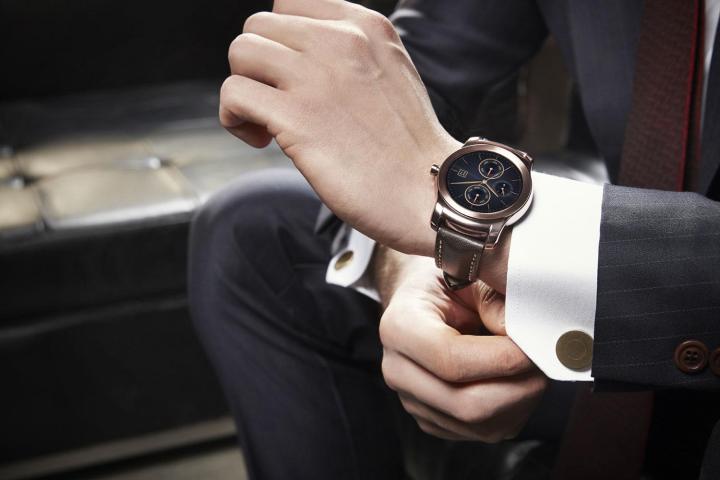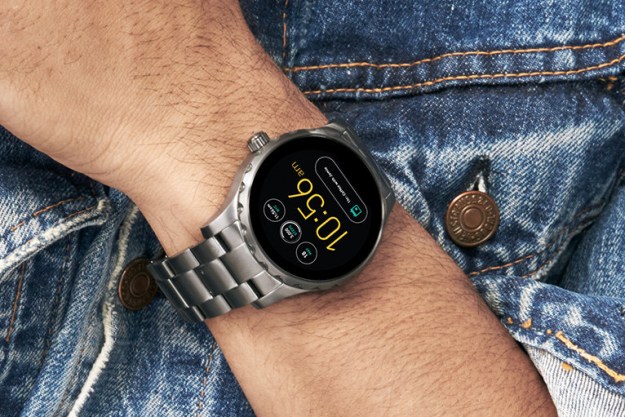
It was full of phones.
So, so many phones. Phones as far as the eye can see, and then further still. The Fira Gran Via venue was practically busting at the seams with the things. And if you stopped off at one of the small cafes surrounding the halls, your teeth probably struck a SIM card when you bit into your paella, because at some point, somewhere, a few snuck away from someone and fell into a pan of cooking rice.
Getting irritated at Samsung for putting out another phone is like getting irritated at the Rolling Stones for continuing to put out rock and roll records.
MWC is a bit like going to a CES that never quite figured out how to diversify its portfolio. Sure, there are other things on the show floor — maybe a car company bought a booth to show off a couple of new models, and perhaps some TV companies want to get in on the action. But on a whole, as its name implies, if you can’t use it to make late-night drunk dials or play Angry Birds, Mobile World Congress can’t really find the use in it.
For the past decade or so, this has been a pretty solid business model. Phones, after all, have become the great consumer-electronic ambassador, the one piece of technology that seeming unites us all. Pretty much everyone we encounter over the age of, say, five, these days has one. And pretty much all of them (the phones, not the people) are smart.
You would be hard pressed to find as unifying a pop-culture phenomenon in the year 2015. I know several people who couldn’t name a Kanye song, and plenty of folks who are utterly lost the minute you turn on a football game. They pretty much all own smartphones.
It’s a big part of the reason why the vast majority of big product announcements have centered around phones — well, phones and tablets, I guess. But let’s be perfectly honest for a second here: If the wonderphul world oph phablets has taught us anything, it’s that, tablets are really just big phones (mostly) without cell plans.
Low blow, I know. It may well be my own jaded veteran status speaking here, but I’m finding it hard to muster the levels of excitement I was once capable of regarding these near-ubiquitous slabs of plastic and glass. Perhaps I’m just not frequenting the right message boards (story of my life), but I don’t think I’m alone in having been somewhat underwhelmed by last week’s Samsung Galaxy S6 announcements.
I don’t mean to heap blame on Samsung here. It’s really not their fault. Getting irritated at Samsung for putting out another phone is like getting irritated at the Rolling Stones for continuing to put out rock and roll records. The fact that you haven’t listen to anything they’ve put out since Some Girls isn’t a very compelling reason for them to quit.
I’m not suggesting that the S6 is the Bridges to Babylon of Samsung phones. But one might be able to make a compelling argument positioning it’s the It’s Only Rock ‘n Roll.
Every time I glance at my wrist, I see potential.
Is this smartphone fatigue? Perhaps. Or perhaps it’s just that every product cycle, manufacturers are largely taking the same components and fashioning them into slightly different configurations.
The great smartphones arms race was pretty hot there for a while. Things got really good, really fast. Now it’s 2015, and things, on the hardware side, at least are pretty good all around. Without painting ourselves into the classic “hardware is perfect and totally finished evolving” corner, it certainly feels like the market has matured to the point where updates are largely tweaks to winning formulas.
This is almost certainly a large part of the reason why pundits have done what pundits so often do: scream from the mountain tops about the next big frontier. In this case, it’s the human body. Wearables are exciting because they feel new, but even more than that, they represent the unlimited, untapped potential of what electronics can do.
“We have the components; we have the rough form factor; we have the software. Now go, create!”

I’m wearing a smartwatch that I’m testing as I write this, and every time I glance at my wrist, I see potential. I see a shiny and exciting new form — a code that several have tried, but no one has quite cracked. That’s exciting to me. That’s the kind of excitement I once felt in the early days of smartphones, when, to stretch my tired analogy even further, the Beatles and Stones were churning out album after album in the race to become the best rock band in the world.
I get a bit of a jolt attempting to grasp the unlocked potential of that 1.6-inch screen. I have to imagine hardware designers feel much the same. As consumers, we’re in a great position: Hardware companies are convinced that they’re sitting on the next big thing, and they’re going to pull out all of the stops attempting to convince us of the same thing.
I get a bit of a jolt attempting to grasp the unlocked potential of that 1.6-inch screen.
Yes, this may sound crazy in a few years or even a few months, but this Wild West paradigm does give one the sense that anything is possible. I’m watching the Pebble Time Kickstarter drive in another tab. It’s currently up to $16.5 million. It’ll almost certainly be well over that by the time this column goes to print. Watching those numbers skyrocket fuels the perhaps crazily romantic notion that maybe this tiny hardware startup has a chance to dominate this nascent field.
In a world where Apple’s market value is higher than the annual GDP of Switzerland, that’s a pretty exciting notion. And hey, I’m hoping as much as anyone that someone comes along and knocks my stubborn socks off with a smartphone idea that makes me eat those words.
Until then, however, there’s a reason everyone’s talking about what’s on your wrist.




